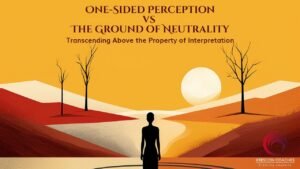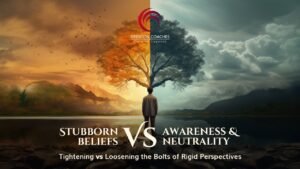“How could I have been so blindsided? If only I had known what to do back then, I wouldn’t be here today.”
Have you ever said this to yourself? Or, have you ever heard someone regret a decision they made 10 years ago, 5 months ago, or even 2 days ago?
How do you make sure the decision you make, be it your career or personal life, is the right one? How do you know? We’re often stuck between feeling versus knowing. Do we feel a particular decision is right or do we know it’s right?
Mapping Out Our Destination
Remember or not, there was a time before Google Maps. Going back a decade or two, there was also a time when people used printed maps to drive from point A to point B when they weren’t familiar with a particular address. Driving in a city for miles from one block to another, pulling down the window to ask a stranger about an address, understanding the landmarks, and counting the number of turns one took. Estimation was a primary factor then and it is even today.
Whereas, these days, a digital map on your smartphone can easily show you where you need to go. It can show you the direction, the time you’ll take to reach, the traffic lanes, and even an AI voice to tell you when to take a turn.
You often reach a place after following the directions instructed on Google Maps. However, be it a digital map or a hard copy of directions, you may still get confused. There are just too many lanes, too many traffic routes to avoid, and yes, too little time to think. A friend once told me that he was late for a meeting because he couldn’t find the place and that Google Maps kept pointing him in a different direction.
I’m not here to discuss a navigation system’s flaws that have made everyone’s life easier. If anything, every Uber driver, pedestrian, and private vehicle driver needs Google Maps to access places unknown to them.
This software works through satellite and aerial imaging to create detailed maps of the world. People can access these maps through a web-based interface or a mobile app.
Maps, be they digital or printed, are a way of giving us directions to places we physically want to reach based on the data they possess. Life too shows us different routes to achieve a goal. Whatever route one takes, it is based on a decision taken upon the data one has, the insights gained, and the interest in the outcome.
But is it ever too simple?
Neutralizing The Threat Of Terror And Temptation
Making a decision has a range of complexities, much of which we create. We are either scared of the outcome or we just don’t think too much of it. Both these extremes are dangerous.
Complex situations demand thorough decision-making where accurate information is needed. Apart from data, one also wishes to differentiate between feeling and knowing. For instance, a young student thinking about a future career path may feel that one particular stream is right for her or him. However, how does this student transcend from ‘simply feeling’ to ‘knowing’ a definite answer, and thus, making the right decision?
Being stuck between feeling and knowing is like a map driving us in circles. We just don’t know what to do, and even if we do, we are afraid of the outcome.
Let’s say a map leads us to the wrong place. What does one usually do? They are likely to get frustrated, turn around, and start searching for their destination again. The trick is to not give up just because you reached the wrong place. The trick is to not beat yourself up when a decision of the past ruins the present.
While there are consequences to our actions, there’s not much one can do once the event has already unfolded.
What’s done, is done.
There is no point crying over spilled milk.
~ James Howell
However, there is a Google Map to decision-making as well but also two unhealthy ingredients that you must remove from the mix.
These are called Terror and Temptation. Terror arises when you are fearful of the unknown. When you do not know the outcome and so you are worried about taking a step in that direction. Furthermore, temptation arises when you are pulled toward the outcome before considering all the facts. This is because you may presume that the outcome is favorable to you, but is it?
Terror and temptation of the outcome are two enemies of the ground of neutrality. These two misfits are the foundation of regret. They are the push (terror) and pull (temptation) of your mind that gets in the way of decision-making.
For instance, deciding not to speak up about one’s career interest due to fear of parental and peer pressure is the bias of terror. So, if one treads on this path, they will soon regret their decision, experience dissatisfaction while training, dissatisfaction on the job, and resent their parents for life.
On the other hand, deciding to pursue a career path for the sole purpose of a sky-high income stems from the bias of temptation. When one is tempted, they are unlikely to consider other important factors like natural tendencies and abilities, specific career interests, identification of prevalent skills, job satisfaction, and so on. In this case, one might get a high salary, but chances are that the other factors get compromised at one level or another.
Only when you are neutral in your decision-making process is when you are most capable of making a decision.
Therefore, by enhancing your Spiritual Quotient you remove the biases caused by terror and temptation.
In this process, you neutralize the threat by gaining a higher ground of neutrality. Then, and only then, you can make a decision where you don’t just ‘feel’ but you ‘know’.
While the outcome is still never in your control, you must understand that decisions made even on the Grounds of Neutrality are subjective. Therefore, beating yourself up or being extremely critical of yourself regarding a decision is not a productive use of your time.
The trick is also to not be afraid of making a decision. It’s as the American entrepreneur, author, and motivational speaker, Jim Rohn, once said, “You cannot make progress without making decisions.”



